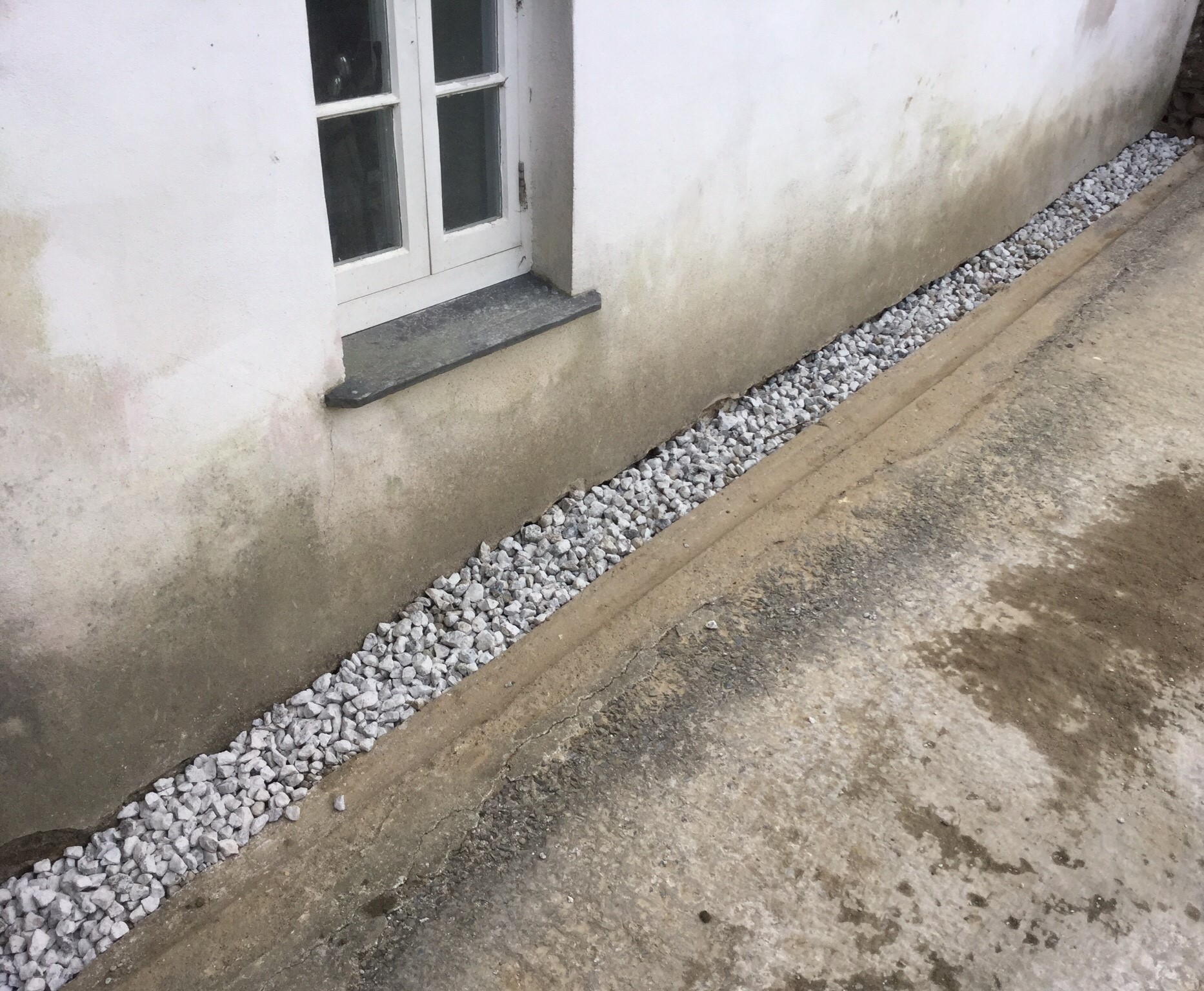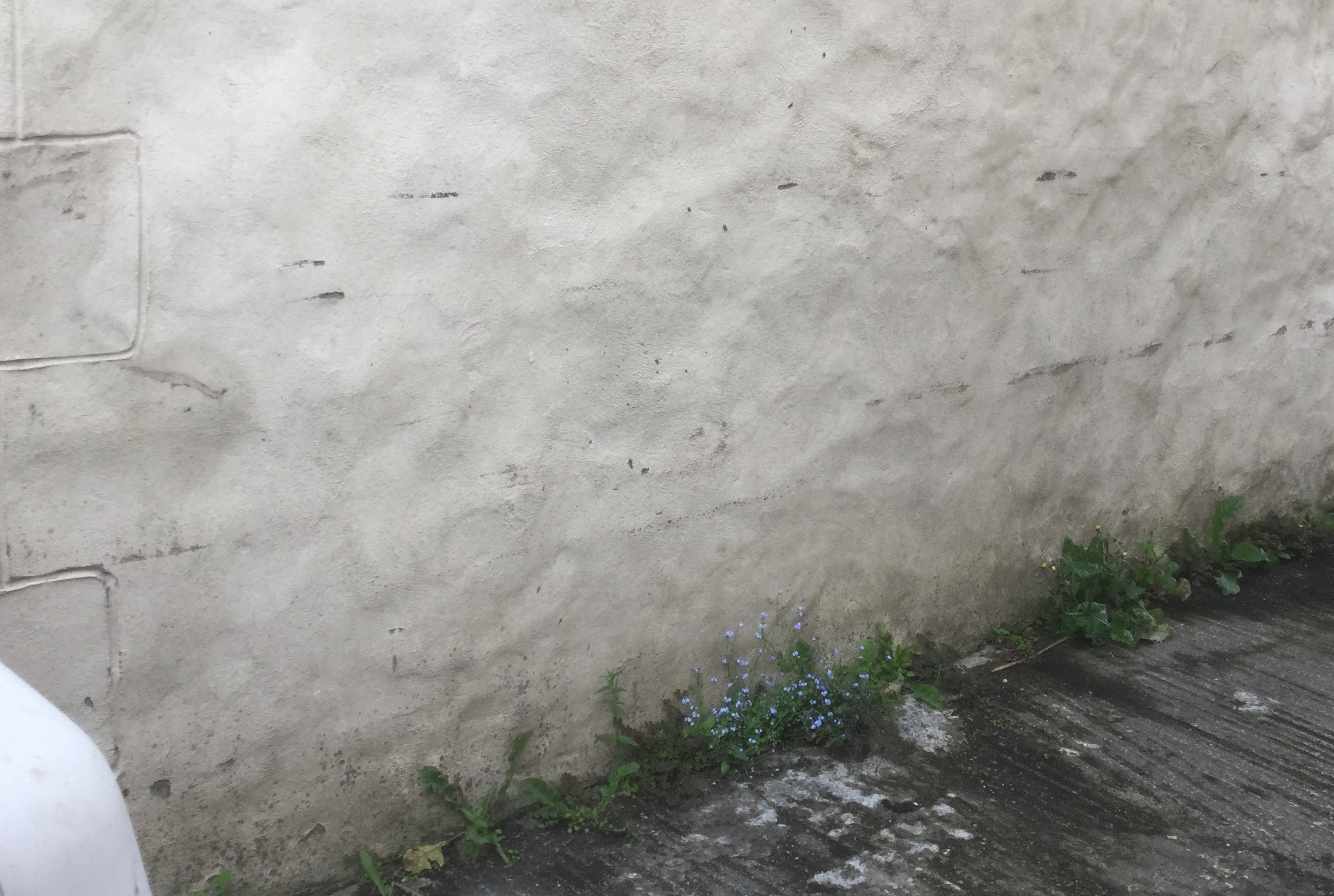Achieving breathability in an older building is one of the key factors for limiting/eradicating damp. Older houses were constructed using stone, brick or earth, and were bonded using earth or lime-based mortars. These materials allow moisture to penetrate the building and then evaporate away meaning they are breathable.
Please see below some of the most common causes of damp to solid walls and some of the measures we use to limit damp:
- Impermeable Applications (e.g. cementitious products, Gypsum coatings and synthetic paints)
Remove all existing impermeable applications. Once this has been achieved any further applications must be breathable, natural lime-based materials.
- Inappropriate External Drainage
Install appropriate land drains at the base of all external walls.
- Insufficient Guttering, Downpipes and Facia Boards
Guttering and facia boards must be in good condition with no leaks and have a suitable fall toward the running outlets. Downpipes should be leak-free, secure, fit directly into the gulley and flow into the land drain.
- Ineffective Roofing
Broken, slipped or missing roof slate/tiles must be replaced.
- External Ground Levels
High external ground levels should be lowered (if achievable) so they are below the level of the internal ground floors.
- Vegetation and/or climbing plants/shrubs
Cut back or remove all vegetation in, on or near to external walls. For more information about climbing plants please have a look at our recent Historic Walls and Ivy Blog.
For further information on damp in old buildings, please visit the section about Damp on our Website.
If you have damp in your historic walls and would like our help, please Contact Us.
Damp Walls in Old Buildings Specialist Cornwall - Damp Limitation Advice Cornwall - Land Drainage Systems Cornwall - Historic Building Restoration Cornwall



